Around the Oval
Remembering Rudy’s Legacy
Campus celebrates an artistic life
 Few Montana artists can match the legacy of Missoula’s Rudy Autio.
Few Montana artists can match the legacy of Missoula’s Rudy Autio.
Though the 80-year-old Butte native died of leukemia on June 20, he left behind a diverse body of work that includes UM’s oft-photographed grizzly statue on the Oval. He also fostered and honed the talents of hundreds of students as a UM art faculty member for twenty-eight years.
Renowned at home and abroad as a ceramic artist and sculptor, Autio was known for his torso-shaped ceramic figures painted with sensual nudes and fierce horses. He worked with a variety of materials and media—everything from tile murals and tapestries to glass, bronze, concrete, and fabricated metal structures.
On the UM campus, Autio’s works decorate the Performing Arts and Radio-Television Center (tapestry), Todd Building (ceramic vessel), Gallagher Building (ceramic vessel and tile wall mural), the yard between Miller Hall and Arthur Avenue (outdoor sculpture), and Liberal Arts Building (building façade relief panel). UM’s Montana Museum of Art & Culture also holds many of his pieces.
UM art Professor Hipolito Rafael Chacón says Autio was a genius who helped push clay beyond the realm of craft and pottery into the modern art arena. With his voluminous-eared pots covered with figurative painting, Autio “helped bridge the chasm that existed between ceramics and abstraction,” Chacón says.
In his drawings, platters, pots, and sculptures, Autio wove Western themes into his work, but he also was heavily influenced by Greek vessels and mythology.
Arne Rudolf Autio was born in 1926 in Butte, the son of a miner and boarding house cook. He first learned to draw from classes offered by the Works Progress Administration. Autio served two years in the Navy during World War II and studied art at Montana State University in Bozeman. He earned his master’s degree in art from Washington State University in Pullman.
Autio and Peter Voulkos, who also achieved national fame for his abstract ceramic pieces, founded Helena’s Archie Bray Foundation for the Ceramic Arts. Autio also started UM’s ceramics department in 1957, when he began teaching there.
Among his many achievements, Autio earned the Tiffany Award in Crafts in 1963, the American Ceramic Society Art Award in 1978, and the first Montana Governor’s Award in 1981. A 1980 National Endowment for the Arts grant allowed him to work and lecture at the Arabia Porcelain Factory and Applied Arts University in Helsinki, Finland.
At Autio’s July 21 memorial service, Chacón said, “Rudy believed in the inherent force and beauty of creation. At his core, he believed in artistic creation as a redemptive act for humanity.”
Top Alums Spotlighted
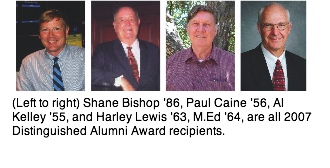 Four exceptional men have been selected by the UM Alumni Association to receive 2007 Distinguished Alumni Awards: Shane Bishop ’86, Paul Caine ’56, Al Kelley ’55, and Harley Lewis ’63, M.Ed. ’64.
Four exceptional men have been selected by the UM Alumni Association to receive 2007 Distinguished Alumni Awards: Shane Bishop ’86, Paul Caine ’56, Al Kelley ’55, and Harley Lewis ’63, M.Ed. ’64.
Bishop, a Conrad native, is a national producer for Dateline NBC. He began his career as a reporter at Missoula’s KPAX-TV and went on to produce at stations in Philadelphia and New York before becoming a Dateline producer in 1994. He covered the World Trade Center and Oklahoma City bombings, the Columbine massacre, the 9/11 attacks, and Hurricane Katrina. He has received two national Emmy awards and was a member of the NBC team that won the 2007 duPont-Columbia University Broadcast Award for coverage of Hurricane Katrina. He also was among Dateline producers who received the Sigma Delta Chi award for outstanding breaking news coverage of the 9/11 attacks. He and his wife, Erika Colness Bishop ’89, also a radio-television graduate and general manager of a high definition production company, maintain their connection to UM’s journalism school.
 Caine, a business administration graduate, grew up in Miles City. He had an illustrious twenty-four-year career as a Naval aviator. In his early service he was credited with thirteen helicopter rescues, and he worked with search-and-rescue operations in the Tonkin Gulf during the Vietnam War. After more than eighty combat missions, he was selected as a recovery pilot for the Apollo 4 spacecraft. He also was a combat squadron, air group, and air wing commander. Since 1980, he has worked in international business. He was a founder of NAI NAFTA, a leader in labor-and-trade corridor studies for major global companies, which helped create many thousands of jobs in NAFTA countries. He recently joined NAI Mexico as executive managing director. He and his wife, Nancy Schilling Caine ’56, live in San Diego.
Caine, a business administration graduate, grew up in Miles City. He had an illustrious twenty-four-year career as a Naval aviator. In his early service he was credited with thirteen helicopter rescues, and he worked with search-and-rescue operations in the Tonkin Gulf during the Vietnam War. After more than eighty combat missions, he was selected as a recovery pilot for the Apollo 4 spacecraft. He also was a combat squadron, air group, and air wing commander. Since 1980, he has worked in international business. He was a founder of NAI NAFTA, a leader in labor-and-trade corridor studies for major global companies, which helped create many thousands of jobs in NAFTA countries. He recently joined NAI Mexico as executive managing director. He and his wife, Nancy Schilling Caine ’56, live in San Diego.
Kelley is professor emeritus of mathematics at the University of California, Santa Cruz. After receiving a UM degree in forestry, he went on to get a doctoral degree in mathematics at UC Berkeley. He was a forester in Oregon and then served as a U.S. Air Force radar officer. A smokejumper during the summers while a UM student, he writes that he first arrived in California by parachute to fight a fire in 1954. While teaching at Berkeley in 1964, he discovered and named the center manifold, and he was among the first to recognize the importance of computers in mathematical research. He is the co-author of three widely used college textbooks on the C programming language. An avid outdoorsman, he and his wife, Carole, travel extensively.
Lewis, who grew up in Butte, earned a bachelor’s and a master’s degree in health and physical education at UM. He was UM’s head track and cross-country coach during 1966-78 and was selected Big Sky Conference Coach of the Year nine times. While serving as director of athletics at UM from 1975 to 1989, he oversaw construction of Washington-Grizzly Stadium. From 1989 to 1994, he served as NCAA assistant director of championships. He was inducted into the Grizzly Sports Hall of Fame in 1998. He has been director of development at the University of Arkansas since 1997 and was instrumental in its successful $1 billion campaign, completed in 2005. He and his wife, Beverly, live in Fayetteville.
New Faces Join UM Administrative Ranks
UM hired a new provost and two deans this spring.
Royce Engstrom assumed the position of provost and vice president for academic affairs in August. The provost is the top executive officer on campus after the president.
Engstrom had been provost and vice president for academic affairs at the University of South Dakota in Vermillion, where he had taught in the chemistry department since 1989. At USD he also served as vice president for research and dean of graduate education. He was a Regents Fellow on the South Dakota Board of Regents during 2003-04.
He replaces Lois Muir, who served as UM provost from 2001 to spring 2006. President George Dennison served as provost during the interim.
UM graduate Peggy Kuhr became the University’s first woman journalism dean in August. She had been Knight Chair of the Press, Leadership, and Community for the journalism school at the University of Kansas in Lawrence, where she had worked since 2002. She was employed from 1986 to 2002 at the Spokesman-Review in Spokane, Washington, where she held four editing positions, including managing editor for content. She also was an adjunct faculty member at two Spokane-area universities during 1998-2001.
Her newspaper experience includes stints at the Hartford Courant in Connecticut and the Great Falls Tribune from 1975 to 1986.
Kuhr replaces retiring Jerry Brown, who had served as dean since 1999 and was instrumental in bringing about the construction of journalism’s new home, Don Anderson Hall.
When Roberta “Bobbie” Evans was hired as the new education dean, it wasn’t a shock. Evans had served as interim dean since July 2006, and had been the School of Education dean from 2001 to 2003. Then during 2003-06, she was a professor of educational leadership, but was asked to become interim dean when Paul Rowland vacated the position.
Evans first came to campus in 1989 as an education assistant professor and director of UM’s Administrative Internship Program. During 1991-98 she chaired the University’s Department of Educational Leadership and Counseling. She also directed UM’s Academy of Curriculum Leadership and Technology from 1994 to 1996. She was promoted to professor of educational leadership in 1998.
Evans taught at high schools and a tribal college from 1978 to 1987 in South Dakota and Nevada. She then became a research fellow at the Research and Education Planning Center at the University of Nevada, Reno, during 1988-89.
The President’s Corner
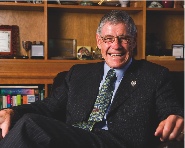 Every issue of the Montanan affords a wonderful opportunity to talk about emerging campus issues and initiatives. In an earlier edition, I discussed the critical importance of private support for public higher education. Two years ago with the assistance of The University of Montana Foundation, we announced a comprehensive campaign to raise $100 million to support the University, with a projected closing date of December 31, 2007.
Every issue of the Montanan affords a wonderful opportunity to talk about emerging campus issues and initiatives. In an earlier edition, I discussed the critical importance of private support for public higher education. Two years ago with the assistance of The University of Montana Foundation, we announced a comprehensive campaign to raise $100 million to support the University, with a projected closing date of December 31, 2007.
Some people wondered about undertaking an effort of this magnitude in the rather quirky environment of the post-9/11 tragedy. However, the response from our alumni and friends has exceeded expectations, with more and more of them stepping forward to help as they can. As a result, we crossed the $100 million benchmark during the summer, although we have not yet succeeded in achieving all the priorities we set for the campaign. Those priorities resulted from a careful identification process involving stakeholders on and off the campus. The faculty and deans proposed priorities, the Campus Development Committee ranked them, the Foundation trustees and staff conducted feasibility analyses prior to the launch, and the Campaign Steering Committee—under the able leadership of Debby McWhinney—led the effort.
Having come so close to complete success, we must redouble our efforts between now and the end of the year to accomplish as much as possible toward satisfying all of them. To all who have helped, I extend our profound appreciation. For those who have not yet had the opportunity, we welcome your involvement during the next few months. We very much need the help of everyone who believes in the goal of assuring a “University for the Twenty-First Century.”
As we progress deeper into the twenty-first century, it seems clear that we must find even more ways to innovate and develop responses to the challenges confronting our society. Based on the record of success to date, I have great confidence that the people who constitute The University of Montana—the faculty, staff, and students—will do their part. However, the chances of success brighten because of the willing support of our alumni and friends. The appropriate theme that pervades this issue of the Montanan appeared a few years ago in a publication of the National Association of State Universities and Land-Grant Colleges, which I will paraphrase: Great societies require for their sustenance and maintenance great universities; and great universities depend for their vitality on private as well as public support. Thank you for believing and acting on the belief!
George M. Dennison, ’62, ’63
President and Professor of History
Where’s Your GRIZ Been?
 Keenan, age 5 (left), and Keely, age 7, show their Griz pride while spinning around in the Alice in Wonderland Teacups during a February trip to Disneyland. “We had a number of people in Disneyland come up to us or holler at us because of our Griz gear during this trip, saying that they loved the Grizzlies,” says Mom Kim (Currie) Morrison ’93. Dad Clint Morrison ’93, was on the family trip as well. Congratulations Morrison family, you’ve won a $50 gift card to The Bookstore at UM.
Keenan, age 5 (left), and Keely, age 7, show their Griz pride while spinning around in the Alice in Wonderland Teacups during a February trip to Disneyland. “We had a number of people in Disneyland come up to us or holler at us because of our Griz gear during this trip, saying that they loved the Grizzlies,” says Mom Kim (Currie) Morrison ’93. Dad Clint Morrison ’93, was on the family trip as well. Congratulations Morrison family, you’ve won a $50 gift card to The Bookstore at UM.
Do you have a photo sporting your Griz gear in an amazing place? If so, send it along with a brief description to: themontanan@umontana.edu. Winners will receive a $50 gift certificate to The Bookstore at UM and see their winning photo published in the Montanan. To be considered, your photo must be in focus with the UM or Griz logo clearly visible.
Looking Good In Green
 Bill Schenk, M.S. ‘95, J.D. ‘00, Helena, was chosen as one of People magazine’s hottest bachelors in the June 17 edition. A water rights specialist with the Montana Department of Fish, Wildlife and Parks, he was named one of the nation’s best-looking eco-crusaders in the “Lean, Green, Sexy Machines” category. “I thought it was kind of nice to make the cut,” Schenk said in an interview. “It’s nice they do a story that says, ‘Look, here are some mainstream guys that are into conservation or environmental stuff.’”
Bill Schenk, M.S. ‘95, J.D. ‘00, Helena, was chosen as one of People magazine’s hottest bachelors in the June 17 edition. A water rights specialist with the Montana Department of Fish, Wildlife and Parks, he was named one of the nation’s best-looking eco-crusaders in the “Lean, Green, Sexy Machines” category. “I thought it was kind of nice to make the cut,” Schenk said in an interview. “It’s nice they do a story that says, ‘Look, here are some mainstream guys that are into conservation or environmental stuff.’”
Getting Hitched, Griz Style
 Nervous groom. Blushing bride. The guests are clad in maroon and silver. The UM Marching Band provides music. Monte is the ring-bearer. The reception is a tailgate.
Nervous groom. Blushing bride. The guests are clad in maroon and silver. The UM Marching Band provides music. Monte is the ring-bearer. The reception is a tailgate.
Sound like the dream wedding for die-hard Griz fans? Well, that’s exactly what UM alumni Kristine Kennedy and Stephan “Dico” Dicomitis will get August 31 at Washington-Grizzly Stadium in the first official College Colors Day Wedding, hosted this year by UM and the Collegiate Licensing Company (CLC).
College Colors Day kicks off intercollegiate athletics nationwide, and fans, alumni, and students are encouraged to wear apparel of their favorite teams. This year CLC, the Atlanta-based organization that regulates UM and Grizzly logos for the University, decided to launch an official wedding to help make college sports history. Each year a different college around the country will host the wedding.
Because they are such loyal Griz fans and were engaged to be married this summer, Kennedy and Dicomitis were chosen for the Griz-themed wedding. Susan Murphy, UM trademark and licensing director, was tasked with making the wedding as Grizzly as possible.
“It’s been fun coming up with creative ways to use the logo and working it into a traditional wedding theme,” she says.
The wedding party will dress in UM locker rooms. Kennedy will walk down the visiting team’s tunnel to meet her groom, and University photographer Todd Goodrich will shoot the wedding photos. The couple’s wedding photo will be displayed on GrizVision the next day during the Montana Grizzlies’ September 1 season opener against Southern Utah.
Griz Glamour Girl Grabs Headlines
 UM physics and music major Hilary Martens joined a select group of accomplished American women when Glamour magazine named her one of 2007’s Top 10 College Women.
UM physics and music major Hilary Martens joined a select group of accomplished American women when Glamour magazine named her one of 2007’s Top 10 College Women.
Martens was profiled in Glamour's June issue, along with nine other young women from colleges around the country. The honor recognizes her many talents and accomplishments, including working with NASA scientists at UM to discover what may be an atmosphere around one of Saturn’s moons. She also is a skilled classical violinist, a bluegrass fiddler, a marathon canoeist, and an energetic volunteer for several organizations.
After flying her to New York City for a photo shoot in March, Glamour selected a photograph of her—playing the violin in an elegant gown—to grace its table of contents, the lead page of the Top 10 College Women section, and an advertisement for next year’s competition.
Glamour brought the winners back to New York in June for a gala awards banquet at the Four Seasons Hotel, where Martha Stewart was the keynote speaker. Stewart was among the program’s Top 10 winners in 1961, when it was an award for best-dressed. Nearly 200 other past winners also attended the festivities.
“All the women I met were amazing,” Martens says. “Many have written novels, or founded international nonprofits, or acted in major motion pictures, or are political leaders. They all had great advice and were enthusiastic about our keeping in contact and following our passions.”
Martens completed her physics degree in December and plans to finish her music degree next spring. After that, she hopes to pursue a doctorate in physics.
“I left feeling re-energized,” she says of the glamorous events in New York. “There is definitely an attitude among these women to make things happen and literally change the world.”
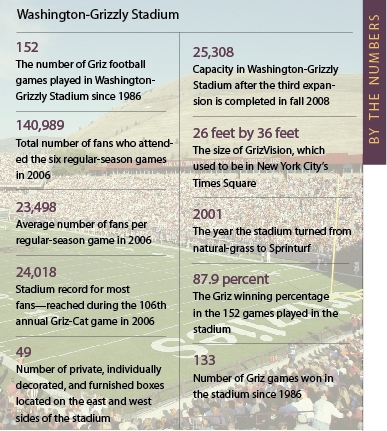
Scientist Helps Craft Major Climate Change Report
Research Reveals a Warming World
 UM forestry Professor Steve Running has been slammed with interview requests and invitations to speak in recent months. That’s because the ecologist is one of the nation’s leading experts on climate change, and he helped write the latest Intergovernmental Panel on Climate Change report.
UM forestry Professor Steve Running has been slammed with interview requests and invitations to speak in recent months. That’s because the ecologist is one of the nation’s leading experts on climate change, and he helped write the latest Intergovernmental Panel on Climate Change report.
Released last spring, the 2007 IPCC report brims with grim facts. Warming is widespread around the globe, for example, and eleven of the past twelve years up to 2006 rank among the warmest on record worldwide.
Running was asked in May 2004 to be the lead author of the North American ecology section of the IPCC report. He met with teams from the 180 IPCC member nations that year at the United Nations Office in Vienna, Austria. Subsequent meetings followed in Australia, Mexico, and South Africa.
“It was like the Olympics of Earth science,” he says.
The UM scientist was required to complete three drafts for his section of the report, which runs about twenty-five pages. The full report will be the size of a phone book when printed. An online version is available at http://www.ipcc.ch.
University’s Capital Campaign Passes $100 Million Mark, Keeps Going
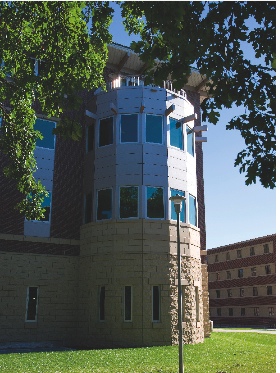 In the time it takes the average college student to finish an undergraduate degree, The University of Montana and the UM Foundation have done something remarkable. Working collaboratively under the leadership of campaign chair Debby McWhinney, they have raised more than $100 million.
In the time it takes the average college student to finish an undergraduate degree, The University of Montana and the UM Foundation have done something remarkable. Working collaboratively under the leadership of campaign chair Debby McWhinney, they have raised more than $100 million.
UM President George Dennison announced this historic accomplishment in his annual State of the University address on August 24. The “Invest in Discovery” campaign, begun in 2002, grew from the generosity of more than 25,000 benefactors—almost a third of whom were first-time donors. The campaign, the largest in the University’s history, was furthered by more than 1,300 volunteers nationwide to broaden UM’s support network and reach out to alumni and friends.
The legacy of giving is on display in new construction, new academic positions, and new or enhanced scholarships to help University students bear the increasing financial burden of post-secondary education.
“With every passing day, the students and faculty of the University experience the benefits flowing from the astonishing generosity of our alumni and friends,” says President George Dennison. “In the end, however, the benefits that come from having a University for the twenty-first century will accrue to the people and state of Montana.”
Some of the campaign accomplishments include the opening of Don Anderson Hall—new home of UM’s respected School of Journalism—and the addition to the Skaggs Building, which houses the cutting-edge research and top-tier curricula of the College of Health Professions and Biomedical Sciences. Ground-breaking for the new Native American Center is slated for spring 2008, thanks to the campaign, and funding is in place to renovate UM’s Law Building.
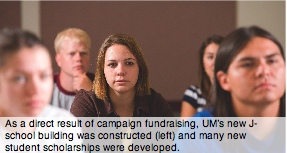 The John J. Craighead Chair in Wildlife Biology, Kittredge Professorship in Creative Writing, and T. Anthony Pollner Professorship in Journalism all were created and funded through the donations, and almost five hundred scholarships and fifty-eight graduate fellowships were created or enhanced.
The John J. Craighead Chair in Wildlife Biology, Kittredge Professorship in Creative Writing, and T. Anthony Pollner Professorship in Journalism all were created and funded through the donations, and almost five hundred scholarships and fifty-eight graduate fellowships were created or enhanced.
Building on the momentum created by passing the $100 million benchmark—a historic first in the state of Montana—UM and the Foundation will intensify work over the next four months of the campaign’s planned duration, with its conclusion coming on New Year’s Eve. Support still is needed for additions to the business and education buildings, endowed chairs, professorships, program enhancement, and more classroom and laboratory space.
Even with the welcome success of the campaign, UM still has needs to be addressed to maintain its status as a first-class institution focused on education and research in the twenty-first century.
All gifts—small and large—are meaningful and will shape the future of the University and its students. Discovery never ends at UM. To learn more about the campaign or to make a gift, visit http://www.discoveryneverends.org.
Griz Lacrosse Comes Out On Top In Nationals
For the men’s lacrosse team, the third time was the charm.
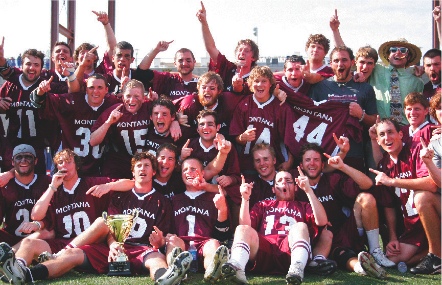 On May 19, the Griz captured the B-division national championship in the Men’s Collegiate Lacrosse Association, after near misses the last two years.
On May 19, the Griz captured the B-division national championship in the Men’s Collegiate Lacrosse Association, after near misses the last two years.
Montana beat No. 1 seed St. John’s University from Collegeville, Minnesota, with a dominant second half to win 15-5 in Dallas’ Pizza Hut Park.
It was Montana’s third appearance in the playoffs in as many years, but this time they left with the trophy. Not a bad way to finish a season that started in a parking lot.
“With the weather we ended up playing our first weekend of games after only three practices,” says team president Kevin Flynn. “And all of those were in a parking lot.”
The team, celebrating its tenth season representing UM, competes in the Pacific Northwest Collegiate Lacrosse League. It has become a perennial powerhouse, remaining undefeated in its division since 2004 and winning the conference title in 2005, 2006, and 2007. Flynn says it’s the hard work and dedication of the team—which relies on donations and players paying out-of-pocket for expenses—that led to the victory.
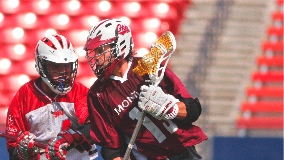 “There was lots of time going in,” he says. “It’s nice to get something out.”
“There was lots of time going in,” he says. “It’s nice to get something out.”
Montana is going out on top. Next year the team will move up to the A-division, where it will face teams from large schools such as the University of Oregon and Boise State.
UM Athlete Academics Lead in the Big Sky
Regardless of how many points Grizzly athletes scored on the field this year, one thing is certain: they made a lot of three-pointers off it.
UM was awarded the 2006-07 Sterling Savings Bank Big Sky Conference Presidents Cup, an award that goes to the school with the most successful student-athletes in the classroom and on the field.
Team grade-point averages, graduation rates, and number of all-conference performers with a grade-point average above 3.00 are used to determine the academic side, while athletic points are determined by regular-season standings for all men’s and women’s sports.
“Winning the Presidents Cup is a great accomplishment for the entire University,’’ says Athletic Director Jim O’Day. “It’s a credit to what our coaches, administrators, and all of the people in Main Hall have been striving toward for many years.”
Montana captured regular-season championships in football and women’s basketball, while the UM women’s cross-country and men’s tennis teams took second. The Grizzly women’s soccer team tied for second.
Academically, Montana finished with a cumulative grade-point average of 3.11 and had thirty student-athletes combine all-conference honors with a GPA of at least 3.00.
The UM women’s tennis and women’s cross-country teams tied for the best GPA at 3.39. The women’s golf team was a close third at 3.35.